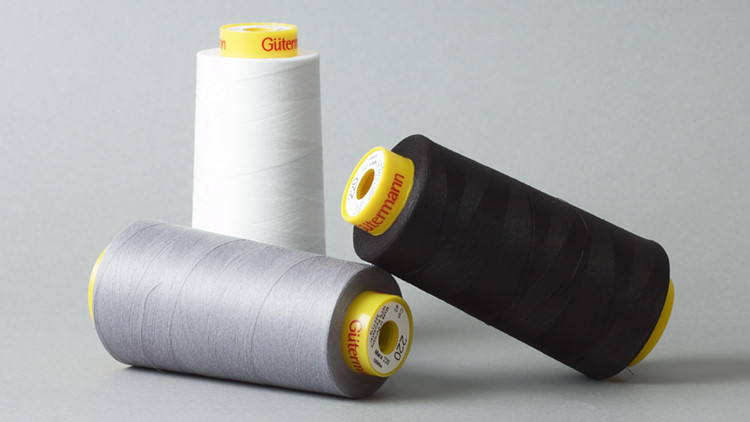Gütermann Mara 220 5000m

| Areas of use: | |
|---|---|
| Regular seams: | |
| Top stitching: | |
| Thick fabrics: | |
| Light fabrics: | |
| Overlock: | |
| Coverstitch: | |
| Machine embroidery: | * |
| Technical specifications: | |
|---|---|
| Material: | Polyester |
| Breaking strength: | 460 g |
| Elongation: | 14% (min) ~ 18% (max) |
| Tkt: | 220 |
| dtex: | 130 |
| Rec. needle size: | NM 60 ~ 65 |
| Dimensions: | 120mm x 54mm |
| Weight (inc spool): | 89g |
Thin and agile sewing threads for light and delicate fabrics.
Chiffon, silk and invisible hems are typical usage of thin threads.
Can also be used as bobbin thread on machine embroidery or as loopers on overlock.
Makes the seam alloweance softer than when using normal threads on the loopers.
This is exactly same thread as Mara 120 1000m except a thinner version.
You can read more about this thread there.
Thin bobbin thread on machine embroidery have two major advantages;
1) the back side of the embroidery is not so stiff and hard as with normal sewing threads
2) you can fit twice the length in a single bobbin
If you plan using Mara 220 for machine embroidery then a single cone will last a long time. Compared to buying prewound bobbins you'll quickly save some money if you embroider a lot. By winding them yourself you can also be perfectly sure the bobbins would fit your machine.
Mara 220 is a very good alternative to woolly nylon if your goal is softer overlock seam allowances. You achieve similar results, but you also get a thread with far more field of uses.
When I need to top stitch in the lining of a garment I prefer using Mara 220. Normal threads can appear bulky, and for tight-fitting garments it can also be uncomfortable. Thankfully top stitching in the lining is rarely needed. On corsets for instance I have to top stitch and it's desirable making it as soft as possible towards the skin.
 TikTok
TikTok YouTube
YouTube